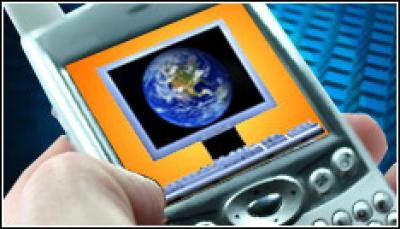San Francisco Set To Pass Radiation Law For Mobiles

Mobile phones sold in San Francisco may soon have to clearly display the levels of radiation they emit
The ‘mobile phones cause brain tumours’ scare has reared its head again after residents in San Francisco made clear they would like to make more informed, and potentially safer, mobile phone purchasing decisions.
On 16 June, the San Francisco Board of Supervisors voted in favour of a bill that would require cell phone retailers to display – in 11-point type or larger – the amount of radiation that’s emitted by each phone they sell.
The radiation measure, called SAR, or specific absorption rate, is a figure that the US Federal Communications Commission (FCC) requires cell phone makers to disclose – where and how they currently disclose the figures, however, is essentially the matter under contention.
Radiation Figures
According to the SF Gate, the new law would require cell phone operators to provide the city with a list of the retailers selling their phones in the city, and to provide those retailers with a list of SAR values. Stores would then receive explicit instructions about how to display SAR values and explain what they mean to consumers.
Failure to do so, however, would come with relatively lax consequences.
While retailers will have until 1 February, 2011, to begin displaying SAR values, penalties for not doing so won’t be issued until 1 May, 2011; independent retailers will have until February 2012 and evade penalties until August 2012. Even then, retailers will be forgiven their first failure to do so, and afterward they’ll receive a $100 (£68) fine; caught again and the fine rises to $250 (£169), and then $500 (£338) for each violation afterward.
Not surprisingly, CTIA, an organisation that represents the wireless communications industry, came out against the bill.
Misleading Consumers
“Rather than inform, the ordinance will potentially mislead consumers with point-of-sale requirements suggesting that some phones are ‘safer’ than others, based on radio frequency emissions,” John Walls, a spokesman for the CTIA, said in a statement to the SF Gate. Walls added that all phones legally sold in the United States already comply with FCC safety standards for radio frequency emissions and so are considered safe.
In August 2009, a group calling itself the International Electromagnetic Field (EMF) Collaborative came out against a well-known Interphone study on the correlation between brain tumours and cell phone use. While Interphone found no conclusive evidence, the EMF Collaborative alleged that the Interphone study was funded by the telecom industry and so was biased in its methods and findings.
Further, in a 44-page report of its own, the collaborative sought to “raise red flags” on the issue, pointing to additional studies, such as one conducted in Sweden that found a 280 percent increase in the risk of brain cancer after 10 or more years of cell phone use.
A member of the collaborative told PC World at the time of the report’s publication, “Cell phones can be used appropriately and have a certain usefulness, but I fear we will see a tsunami of brain tumours, although it is too early to see that now since the tumours have a 30-year latency. I pray I’m wrong, but brace yourself.”
 CTIA’s Wall responded then as well, saying that “the peer-reviewed scientific evidence has overwhelmingly indicated that wireless devices do not pose a public health risk.”
CTIA’s Wall responded then as well, saying that “the peer-reviewed scientific evidence has overwhelmingly indicated that wireless devices do not pose a public health risk.”
In November 2006, a study by the Cleveland Clinic additionally suggested that men who use a cell phone for more than four hours a day could be damaging their sperm. Dr. Ashok Agarwal, author of the report, said at the time that his study was consistent with earlier findings regarding fertility and exposure to electromagnetic radiation.
In January, Maine state Rep. Andrea Boland proposed a bill to put warning labels on cell phone packaging, noting the possible link between brain cancer risk and electromagnetic radiation. In March, the bill – which may have been especially damaging for Research In Motion, whose BlackBerry Bold 9700 handset is said to emit the highest SAR level in the industry – was defeated.
According to a February ranking by the Environmental Working Group, the BlackBerry Bold 9700’s SAR value was followed by that of the Motorola Droid, the LG Chocolate and the Google-branded HTC Nexus One.
The week of 21 June, the San Francisco Board of Supervisors is scheduled to cast a final vote on the decision, which, according the SF Gate, is expected to pass.